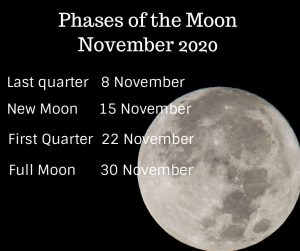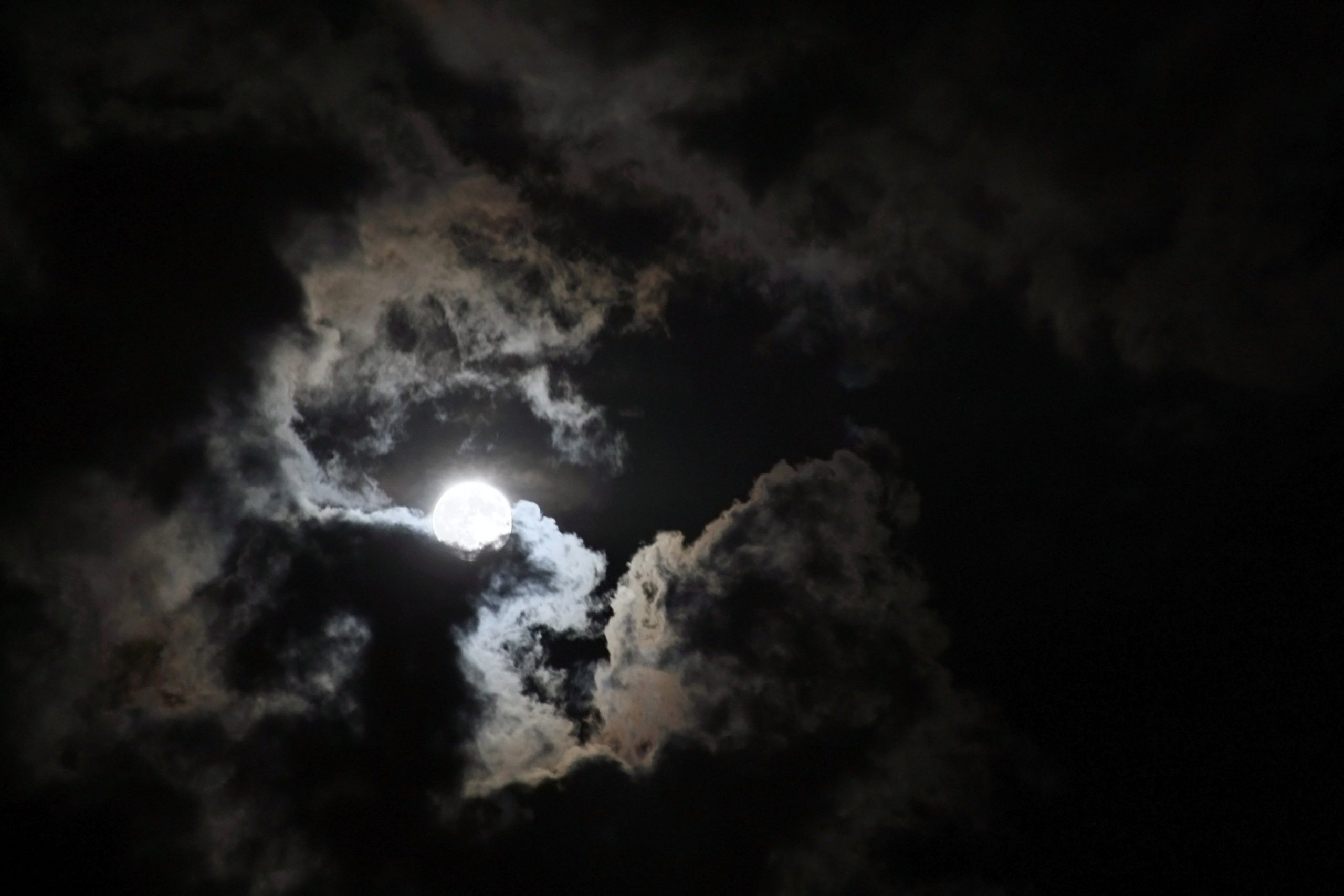November 2020 is here: dark, cold and, hopefully, dry.
Being outdoors and engaging in some soul-soothing mind-stimulating activity is especially important now that many nations around the World enter yet another lockdown. So wrap up warm and let’s go stargazing! Here are your celestial ABCs for the month ahead!
C IS FOR CONSTELLATIONS
A handful of star patterns- we call them circumpolar constellations – can be seen in the sky all year round. Other patterns only appear in a particular season. One of the most famous and best recognized ‘winter’ constellations, Orion the Hunter, will make its return in November. As the month progresses, you will notice Orion climbing higher into the night sky. To make the most of your Orion-gazing, learn all about the stars that outline the hunter’s shape in Orion up close before heading out.
M IS FOR MOON
Wondering what the Moon phase is today? Here are the dates for your calendar:

The November 2020 New Moon will be a Super New Moon (or New Supermoon), with “super” referring to the Moon being in its closest point to the Earth. In the media we usually only hear of Full Moons being called Supermoon. But, in fact, both New and Full Moon can be Supermoon.
If you observe the Moon a day or two before (and after!) the New Moon, you might be able to spot a beautiful phenomenon called the EARTHSHINE. It is when not only the crescent Moon, but also the rest of the lunar disk is visible thanks to the sunlight reflected off the Earth shining on the Moon. The earthshine is said to be the strongest in the Spring, but that doesn’t mean we cannot see it in November 2020.
If you want to keep an eye on the Moon in the future, download this awesome printable pdf calendar of the lunar phases.
P IS FOR PLANETS
All five ‘naked eye’ planets – Mercury, Venus, Mars, Jupiter and Saturn – will be on the celestial display in November 2020.
To see the ‘morning stars’ Mercury and Venus, set up your alarm for one hour before sunrise. Can you spot a very bright star? That’s Venus! Mercury is the one below Venus and just above the horizon.
Jupiter and Saturn 🪐 will shine brightly in the evening skies all month long. They will stay close to each other with Jupiter unmistakably being the biggest and the brightest of the two.
We had such a great time observing Mars this October. Thankfully, you will still be able to enjoy the view of the Red Planet in the evening all November, although as the month progresses Mars will be getting dimmer and dimmer.
S IS FOR SHOWERS. METEOR SHOWERS!
Two meteor showers will light up the November 2020 skies: Northern Taurids and Leonids.
🌠
The Northern Taurids, the least abundant of the two showers, will peak on November 11-12. The best time to observe the shower maximum (you can expect to see 4 or 5 meteors every hour) will be around midnight. The radiant of the Northern Taurids, that is the point in the sky where the shooting stars seem to originate from, is the constellation Taurus the Bull. Here is how to find the Taurus constellation in the sky.
🌠
The Leonid meteor shower will be active between November 6th and 30th with the peak on November 16-17. The best time to observe the shower will be after midnight (or, better still, just before dawn) and on November 17th, we can expect to see 15 meteors every hour. The radiant of the Leonids lies in the constellation Leo the Lion. Leo is very easy to find in the sky, just follow the Big Dipper’s pointer stars “down” towards the bottom of the pan (if you follow the same stars in the opposite direction, you will find the North Star)!
This shower is famous for its bright meteors, so we hope you will join thousands of other stargazers all around the World in Leonid spotting.
Making sense of the night sky
Figuring out which [star,constellation, cluster etc] is which can be tricky for beginner stargazers. The good news is: the more you practice, the easier it gets. To familiarize yourself with the night sky, you can make this simple diy planisphere. This is a special sky map and it’s a great fun to use. Alternatively, use these excellent (and free!) Open source planetarium software and free night sky apps for stargazers.
We at WonderDome are passionate about sharing the wonders of the night sky with our learners. Please visit our Portable Planetarium for a guided tour of the virtual heavens. We cannot wait to tell you all about constellations: their legends, the science behind some of their most interesting stars, deep sky objects and so much more!

